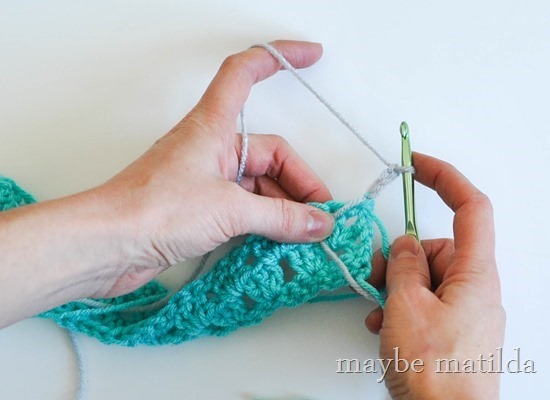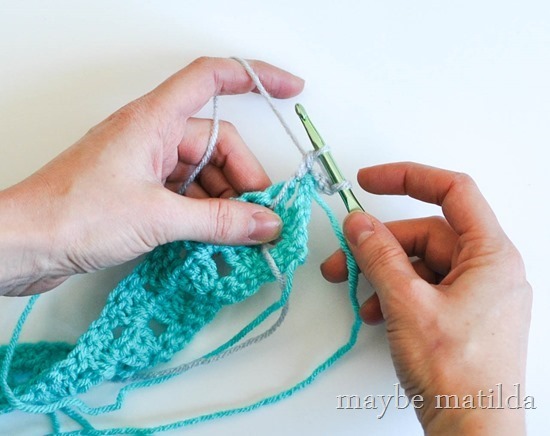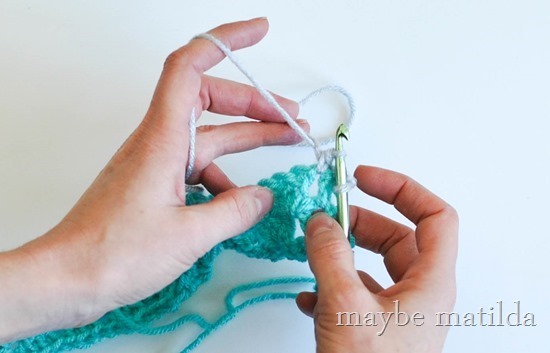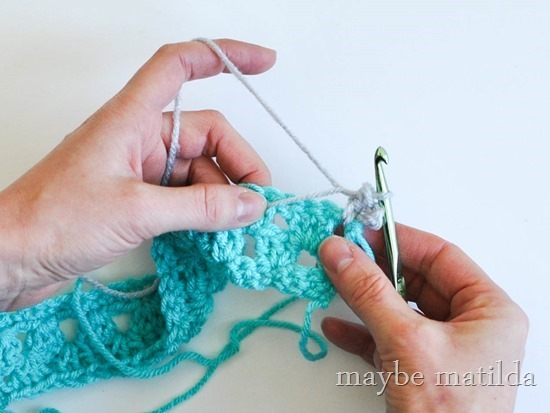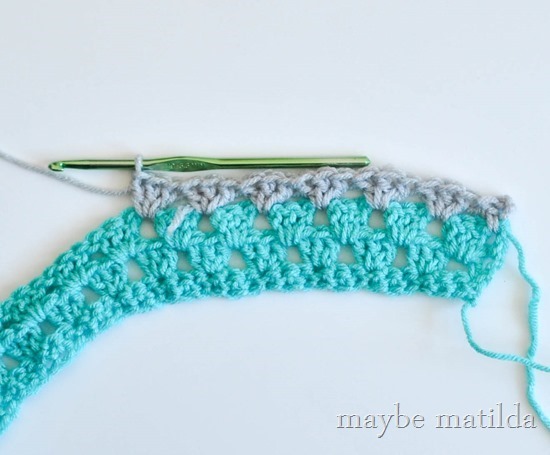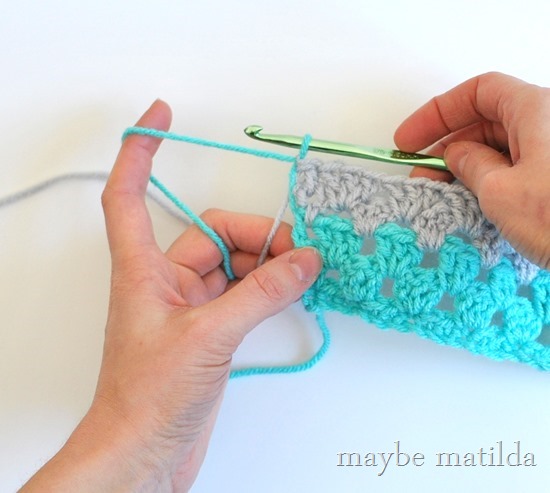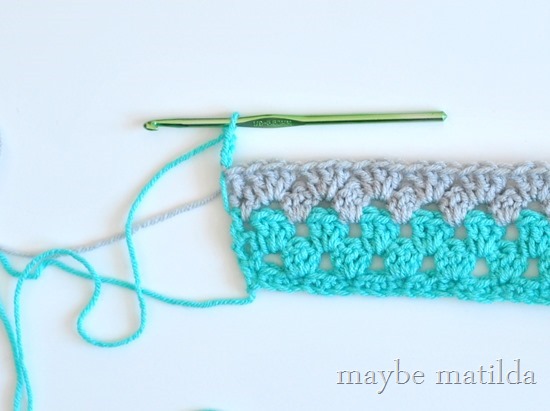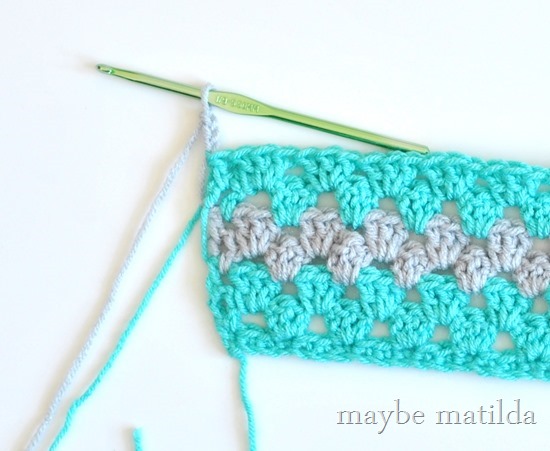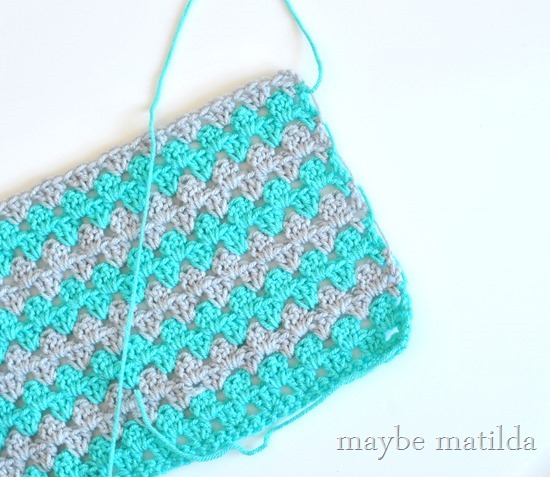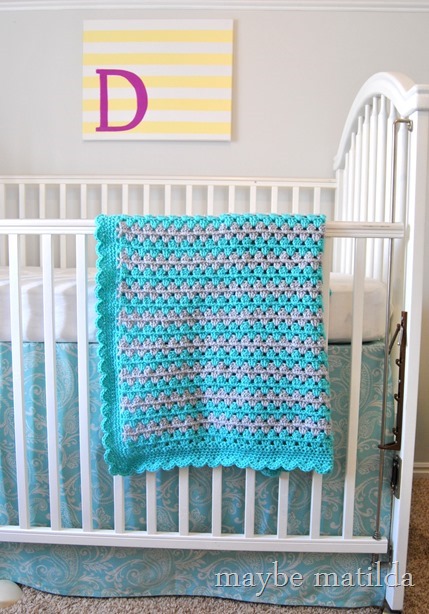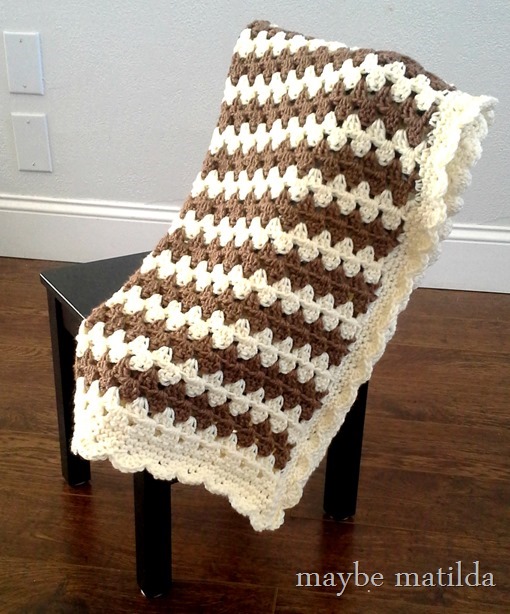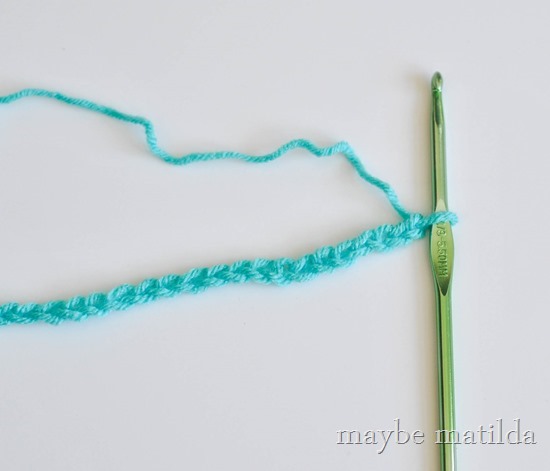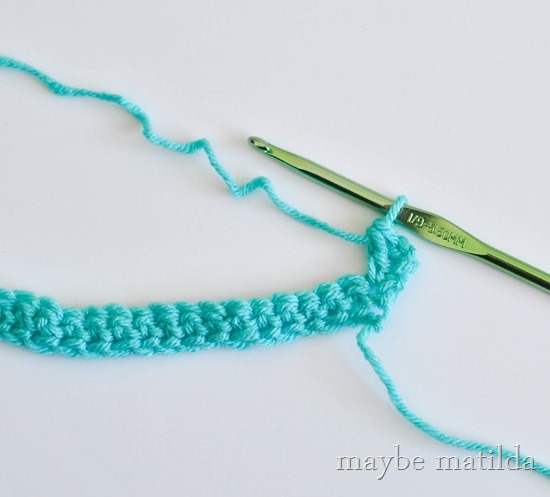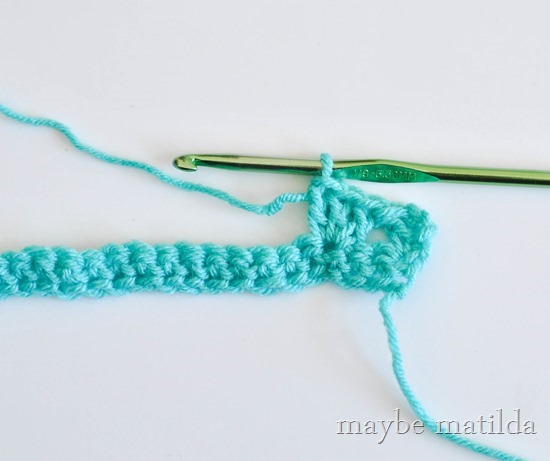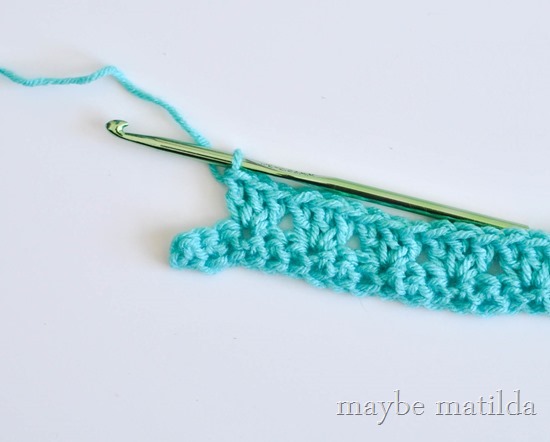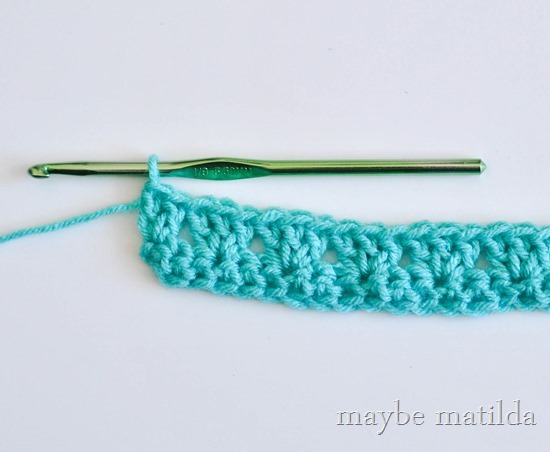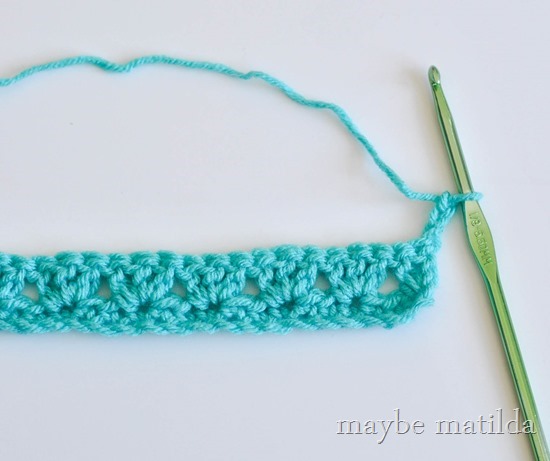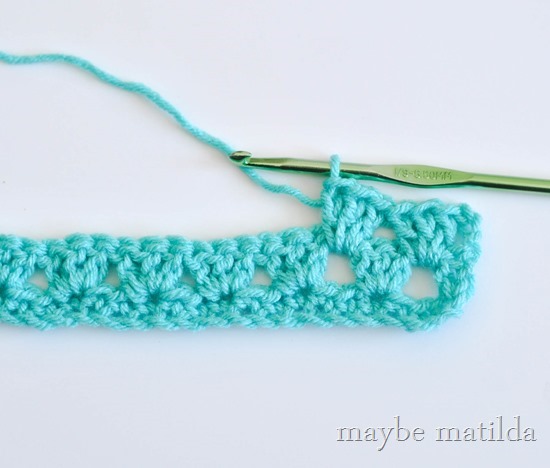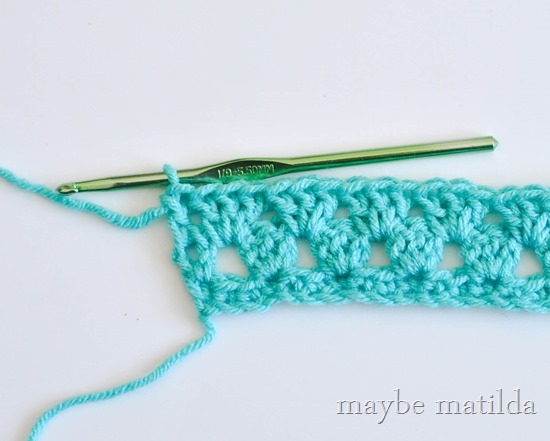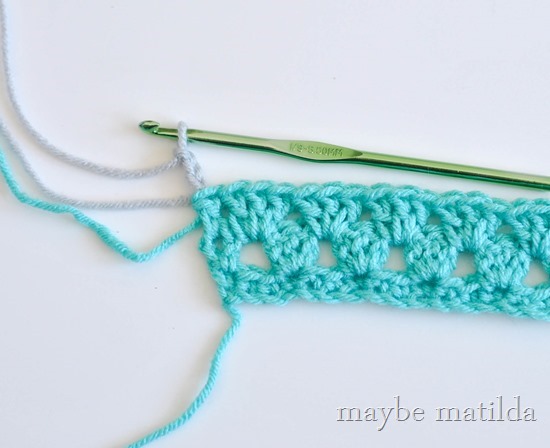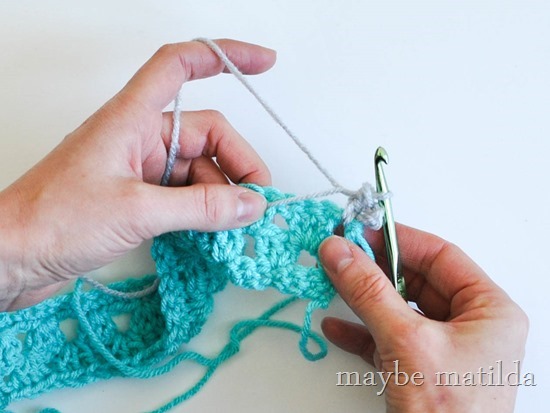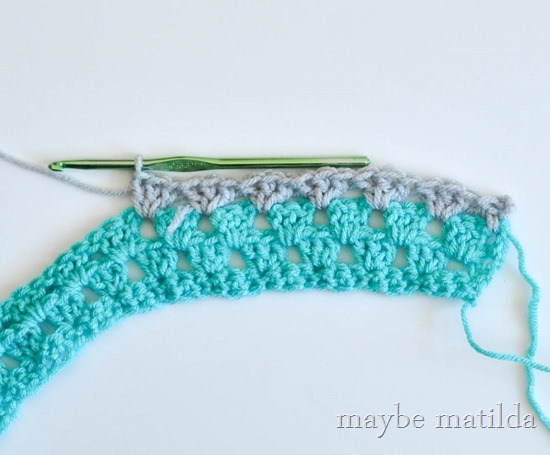
If you’re just joining in, or need to jump back, feel free to revisit the first two parts of this series using the links below . . .
Part 1: Blanket Pattern
Part 2: Timesaving Tips and Tricks
Today we’ll finish it up with a nice wide border, ending with some sweet little scallops.
After working through parts 1 and 2, you should have a nice little blanket, completed and ready to add a border. I ended mine when it was something like 30-32 inches square. My border adds another 4 or so inches. I think this is a nice size for a baby blanket—easy to carry around or play on or snuggle with.
To start the border, either chain 1 with the color you used last, or, if you want your border to be in the color you aren’t currently using, fasten off the last stripe color and join in the border color at the corner of your final row, and chain 1. Work 1 single crochet in each stitch, all the way across this top edge of the blanket. (I like to work the final single crochet of each cluster into the little opening between each cluster instead of just through the top two loops of the stitch. I think it looks neater this way. You can see where I work this stitch in the photo below.)
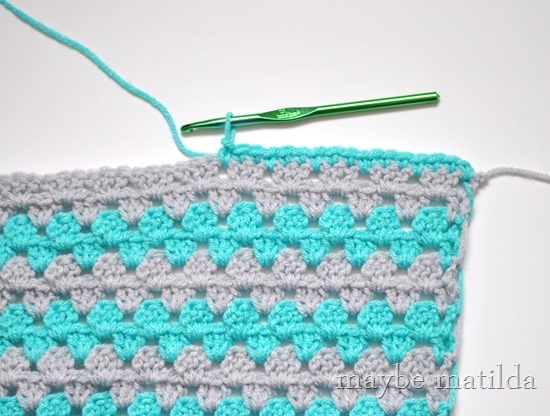
Work your single crochets all the way across the top edge of the blanket. When you get to the corner, work 3 single crochets all in the same corner space before continuing on. This will allow you to work evenly around the corner so your border stays nice and flat instead of curling up.

Now we’re on the side of the blanket, and there aren’t obvious stitches to work our single crochets into like there were along the top edge. You’ll work 2 single crochets around each double crochet (or chain) that starts/ends each row.
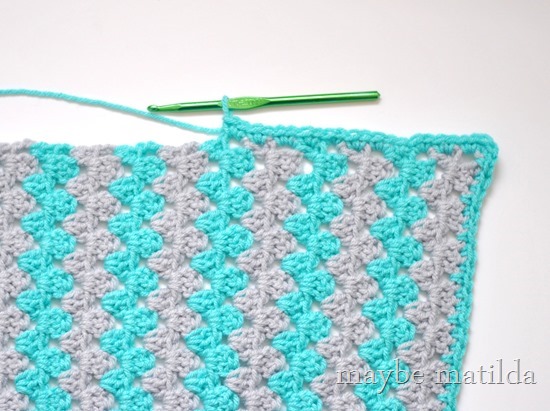
If your border looks a little wavy or uneven at this point, don’t worry. As you add more rows, it evens out beautifully.
Once again, work 3 single crochets into the corner of the blanket. Continue working single crochets across the bottom edge of the blanket (which is the starting chain—just place one single crochet in each chain across the bottom), work 3 single crochets into the corner, then continue up the remaining side with 2 single crochets around each dc/ch. Finish up with 3 single crochets in the final corner, and slip stitch to the starting chain 1 of the border to join.
Chain 1 and continue working around until you’ve reached the width you’d like for your border. (Remember to always work 3 single crochets into the point of each corner! Other than the corners, work 1 single crochet into each single crochet around.) When you’re happy with the width, slip stitch to your starting chain 1 to join.
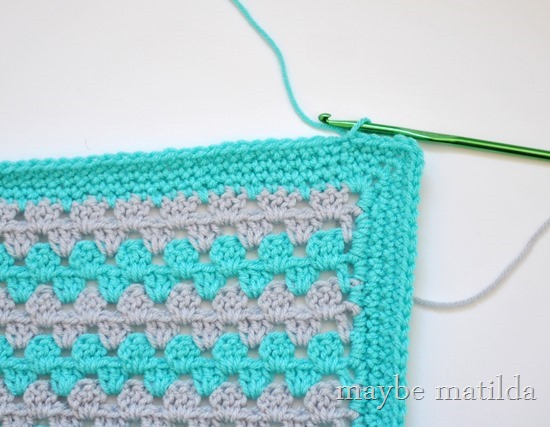
On to the scalloped edge! Don’t chain again before beginning this final row. The last thing we’ve done is slip stitched to join the start and end of the final row of single crochets.
Without chaining, skip the first stitch of the row, and work 5 double crochets all into the next stitch.

Skip the next stitch, then slip stitch into the following stitch. This slip stitch will ‘anchor’ this first scallop down.
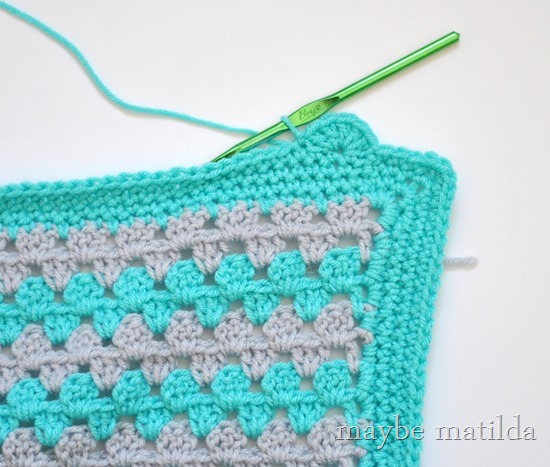
Skip the next stitch, and work 5 double crochets all into the next stitch; skip next stitch and slip stitch into the following stitch. Continue all the way around the blanket (you don’t have to change anything to work around the corners; just continue with the pattern of skipping a stitch, placing 5 dcs in the next, skipping a stitch, then slip stitching into the following stitch). So, to summarize, each scallop will have 5 double crochets all worked into the same space, with one skipped stitch on each side, and a slip stitch between each scallop.
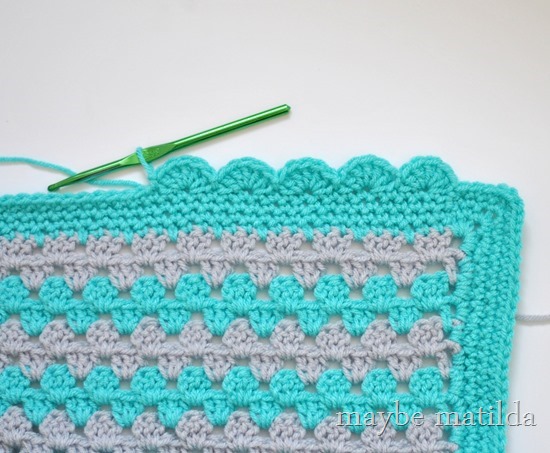
As you work your way around and get closer to the start of your scalloped row, you may find that you’ll need to fudge it a little to get your final scallops to fit in nicely. Just do your best to fit them all in as evenly as you can. No one will ever notice if you skip more than one stitch between the final few scallops, or pack them in a little more tightly with fewer skipped stitches. For my last scallop, I had to put two scallops right next to each other without skipping the spaces between them. It’s okay.
When you reach your first scallop, slip stitch to join. Fasten off and weave in all ends. You’re done!
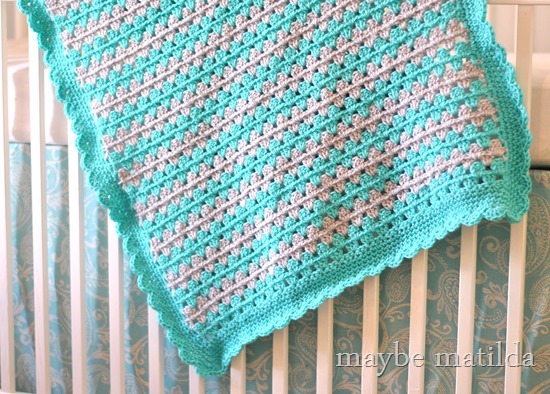
I just love how these sweet granny stripe blankets look. They have such a timeless look, but depending on the colors you choose, you can really make them look so fresh and modern.


